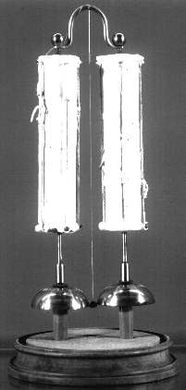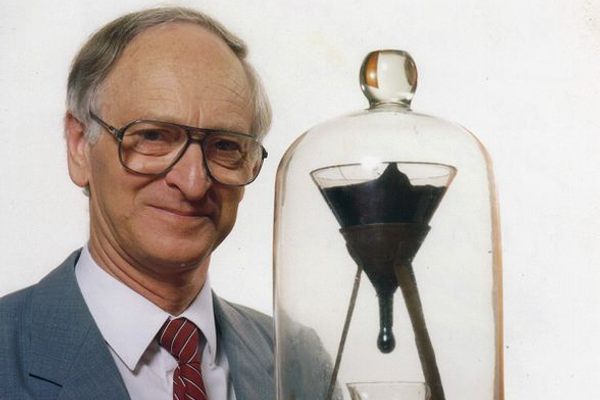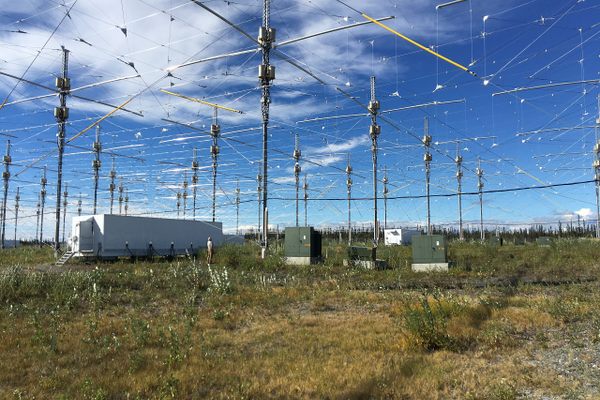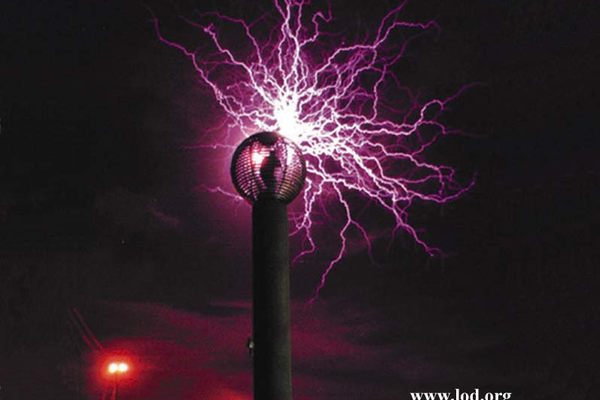AO Edited
Oxford Electric Bell
This battery powered bell has been ringing since 1840 and is one of the worlds longest running science experiments.
For over 170 years, the Oxford Electric Bell (also known as the Clarendon Dry Pile) has been chiming almost continuously, the composition of its power source uncertain. Currently located in the Clarendon Laboratory at the University of Oxford, the Bell is an experiment consisting of two brass bells each stationed beneath a dry pile battery, with a metal sphere (or ‘clapper’) swinging between them to produce a ring that has occurred on the order of 10 billion times.
First displayed in 1840, it was constructed by instrument makers Watkin and Hill, and purchased by professor of physics Reverend Robert Walker. The sphere suspended between the two bells is 4mm in diameter, perpetually alternating between the bells by way of electrostatic force and producing an oscillation frequency of 2 Hertz.
As the sphere hits one of the bells, the corresponding dry pile battery gives off a small charge thus electrostatically repelling the clapper, causing it to be attracted to the opposite bell. The process repeats with only a tiny amount of charge being carried between the two brass bells, so while a high voltage is required to create the motion, it is only a small drain on the battery, so the dry piles have continued to ring the bell for nearly 170 years, making it one of the longest-lasting scientific experiments in the world.
What is most interesting, and mysterious, about the apparatus is the internal composition of the ‘dry pile’ batteries. It is known that they have been coated with an insulating layer of molten sulfur in order to protect against atmospheric damage (i.e. moisture), then connected in series at their lower end to the two bells.
Their interior is suspected to be similar to that of Zamboni piles (an early electric battery invented by Giuseppe Zamboni in 1812), as records of popular curiosities of the same time period have been found. This indicates that the dry pile batteries are probably composed of alternating layers of metal foil and paper coated with manganese dioxide that may be several thousand layers, or discs, thick.
While devices such as these can be considered a novelty, at the time they helped to distinguish the now-outdated scientific theory of contact tension (a theory that attempted to account for all known sources of electric charge) and the theory of chemical action (also known as ‘electrochemistry’ and involved the transfer of electrons between the electrode and electrolyte).
The Electric Bell is still ringing, though is barely audible as it is now encased in a glass bell jar two layers thick.
The Atlas Obscura Podcast is a short, daily celebration of all the world’s strange and wondrous places. Check out this episode about the Oxford Electric Bell.















Follow us on Twitter to get the latest on the world's hidden wonders.
Like us on Facebook to get the latest on the world's hidden wonders.
Follow us on Twitter Like us on Facebook